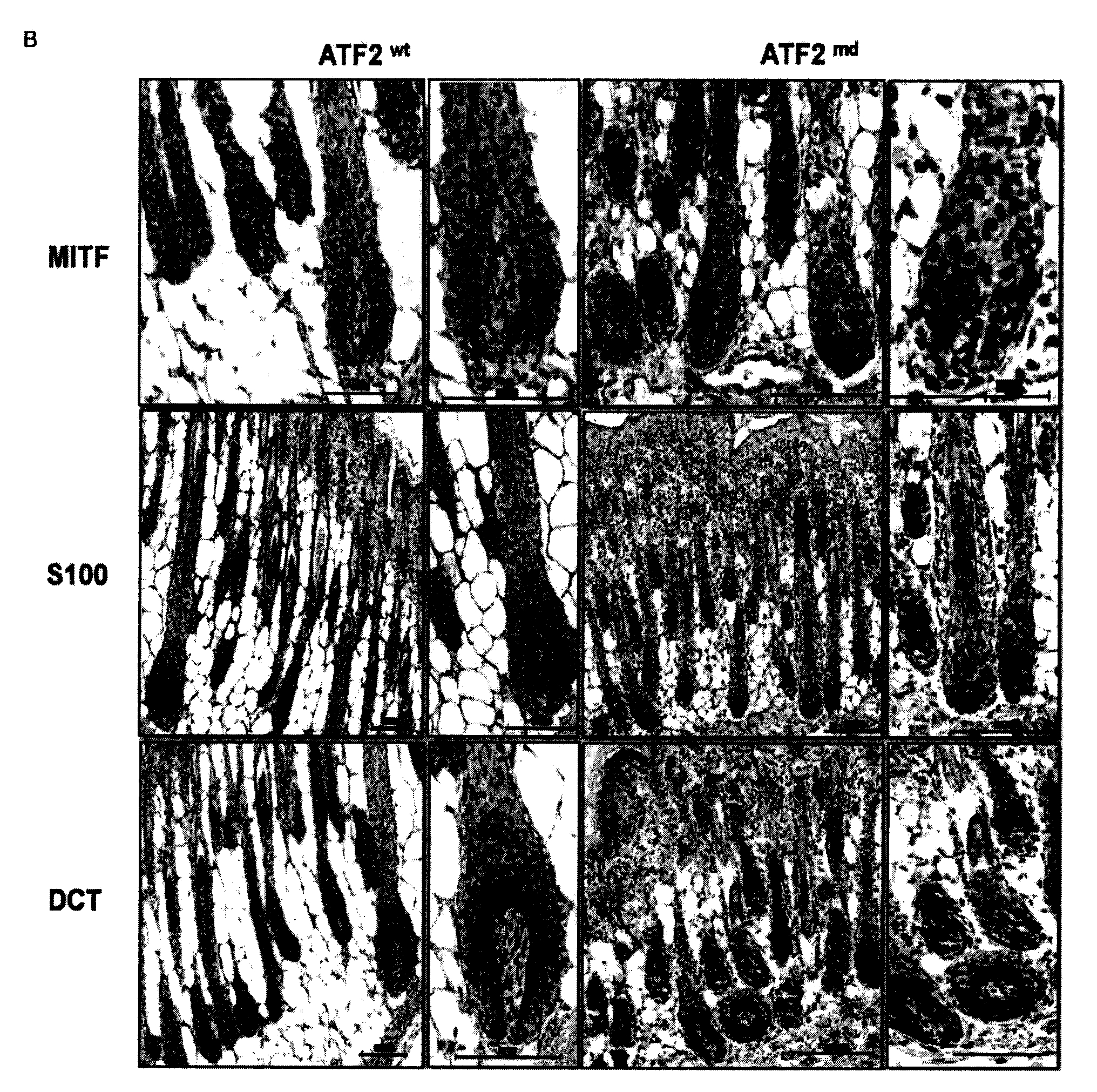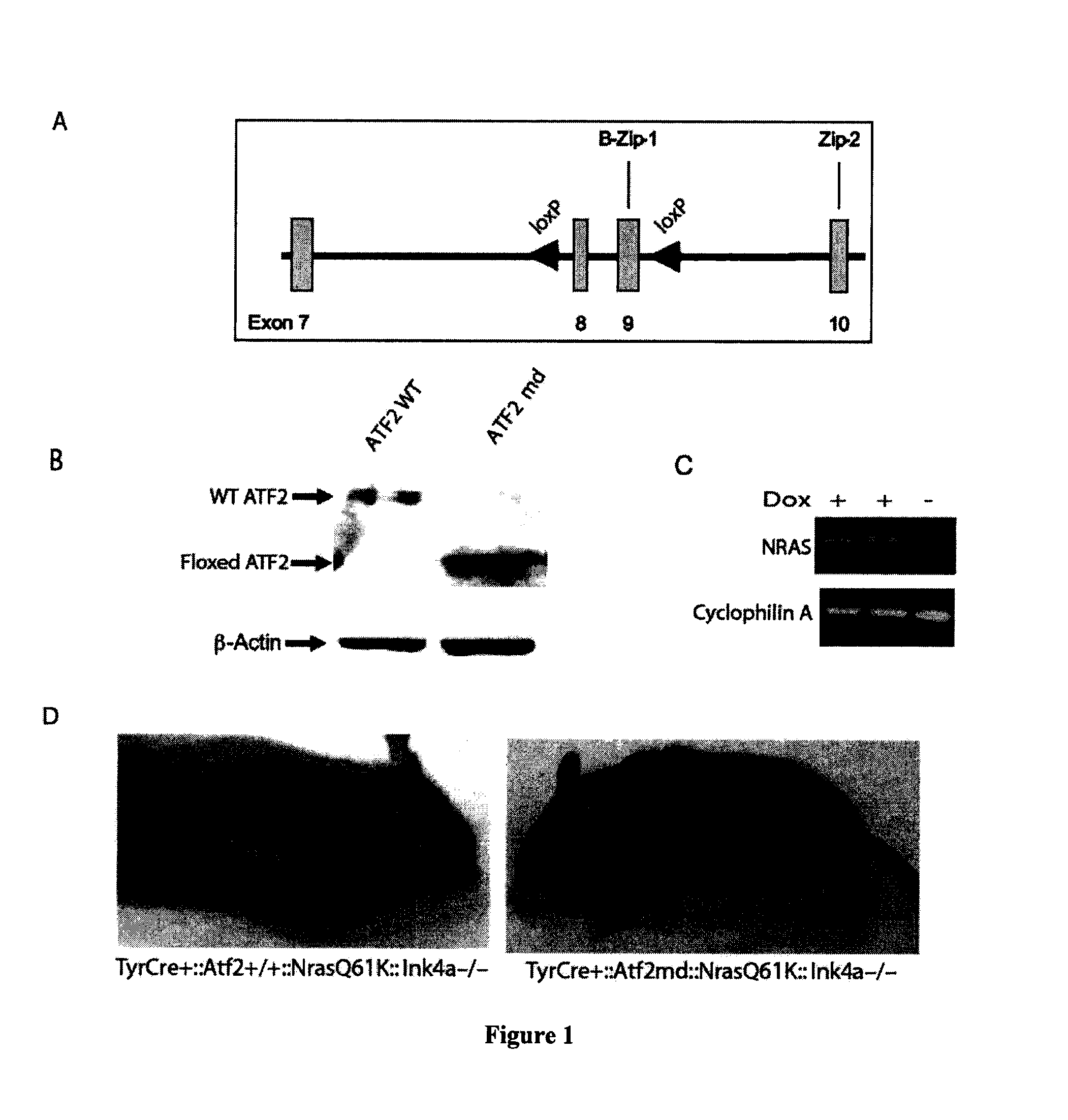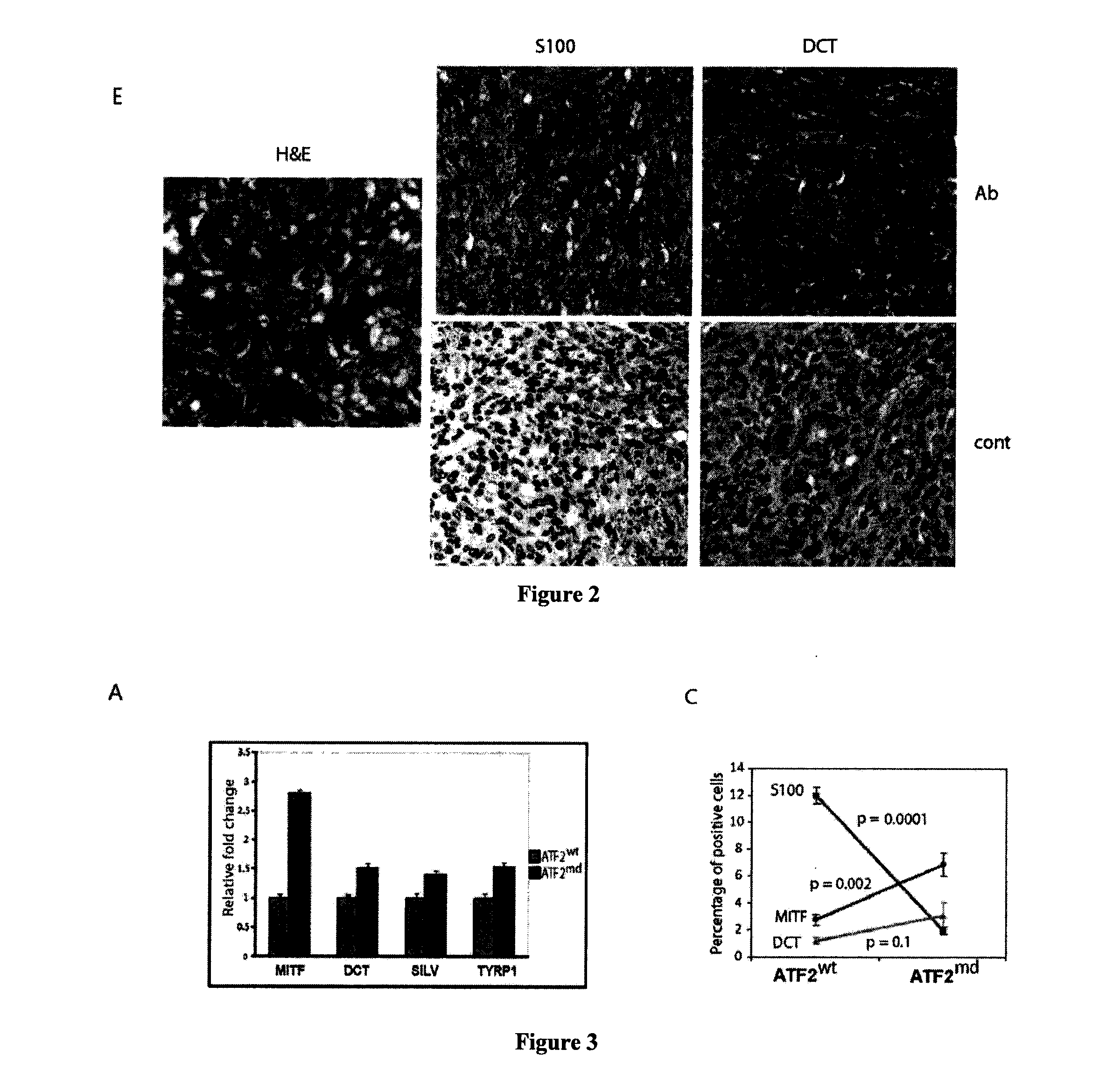Methods of diagnosis and treatment of melanoma
- Summary
- Abstract
- Description
- Claims
- Application Information
AI Technical Summary
Benefits of technology
Problems solved by technology
Method used
Image
Examples
example 1
Generation of Melanocyte-Specific ATF2 Mutant Mice
[0047]Because global Atf2 knockout in mice leads to early post-natal death, the Cre-loxP system was utilized to disrupt Atf2 in melanocytes. Deletion of its DNA binding domain and a portion of the leucine zipper motif results in a transcriptionally inactive form of ATF2 (FIG. 1A). To generate loss-of-function mutants, mice that would allow CRE-dependent deletion of these domains were established. Mice homozygous for the loxP-fianked (floxed) Atf2 gene (Atf2f / f) were born at the expected Mendelian ratios and presented no apparent abnormalities. In addition, in several tissues analyzed, ATF2 expression levels were comparable between WT and Atf2f / f mice (data not shown).
[0048]To elucidate the role of ATF2 in melanoma, Atf2f / f mice were crossed with mice harboring a 4-hydroxytamoxifen (OHT)-inducible Cre recombinase-estrogen receptor fusion transgene under the control of the melanocyte-specific tyrosinase promoter, designated Tyr::CreER ...
example 2
Disruption of ATF2 in Melanocytes Inhibits Melanoma Formation
[0049]To address the role of ATF2 in de novo melanoma formation, Tyr: :CreER: :NrasQ61K: :lnk4a− / − (KO of exon 2-3 of Cdkn2a locus that encodes for both p16lnk4a and p19Arf) mice, which develop spontaneous melanoma (Lynda Chin, unpublished observations), were crossed with Atf2md mice. Similar to findings reported by Ackermann et al. (Cancer Res., 2005, 65: 4005-4011), mutant N-Ras / lnk4a− / − mice developed melanoma within 8-12 weeks with metastatic lesions often seen in the lymph nodes. However, the incidence of melanoma was lower in Tyr::CreER::NrasQ61K::lnk4a− / − mice used in the present study (50% penetrance, of which 50% of the tumors were confirmed to be melanoma) and this was attributed to expression of mutant NRAS induced only after birth, as opposed to activation of NRAS during embryogenesis, as reported by Ackermann et al. Thus, Atf2md::N-RasQ61K:lnk4a− / − mice were used to assess changes in melanoma incidence in the ...
example 3
Identification of MITF as an ATF2-Regulated Gene
[0050]To assess the mechanism underlying ATF2′s contribution to melanoma development, gene profiling array analysis of primary melanocytes prepared from Tyr: :Cre+::Atf2+ / +::NrasQ61K::lnk4a− / − and Tyr::Cre+::Atf2md::NrasQ61K::lnk4a− / − mice was conducted. Because, as reported above, only one melanoma formed in the ATF2 mutant group, the analysis was limited to melanocytes. In all cases, ATF2 was inactivated and NRAS was induced in culture within 48 hours of plating cells, as monitored by western blots (FIG. 1b, 1c, and data not shown). Melanocytes were enriched, and immunostaining with appropriate markers confirmed that samples were free of keratinocytes and fibroblasts (data not shown; see Example 10 for details). RNA was prepared from cultures and two biological and technical replicates were used for data analysis. As shown in Table 3, among transcripts differentially expressed in ATF2 WT and mutant cultures were several factors that ...
PUM
| Property | Measurement | Unit |
|---|---|---|
| Fraction | aaaaa | aaaaa |
| Fraction | aaaaa | aaaaa |
| Fraction | aaaaa | aaaaa |
Abstract
Description
Claims
Application Information
 Login to View More
Login to View More - R&D
- Intellectual Property
- Life Sciences
- Materials
- Tech Scout
- Unparalleled Data Quality
- Higher Quality Content
- 60% Fewer Hallucinations
Browse by: Latest US Patents, China's latest patents, Technical Efficacy Thesaurus, Application Domain, Technology Topic, Popular Technical Reports.
© 2025 PatSnap. All rights reserved.Legal|Privacy policy|Modern Slavery Act Transparency Statement|Sitemap|About US| Contact US: help@patsnap.com



